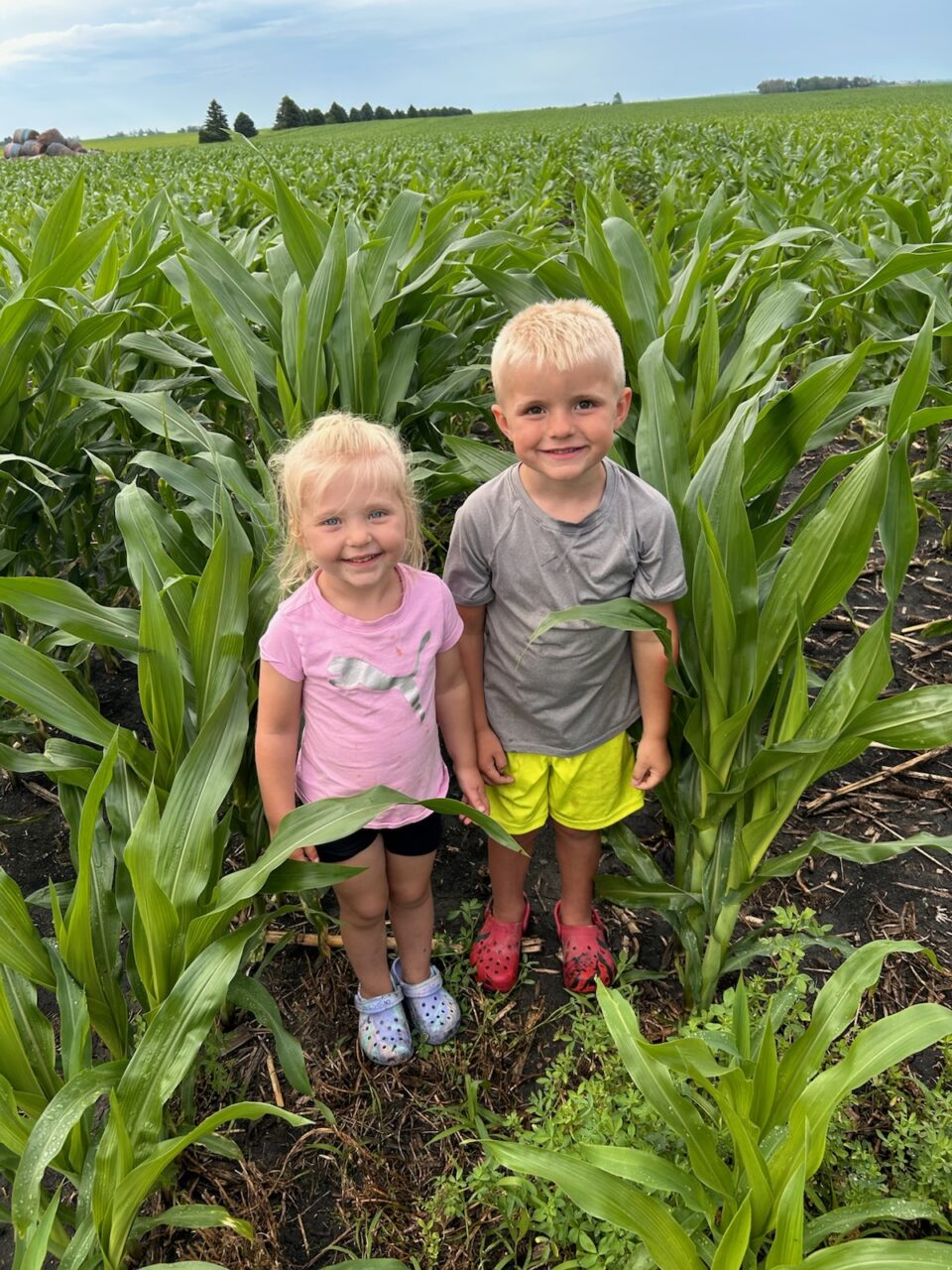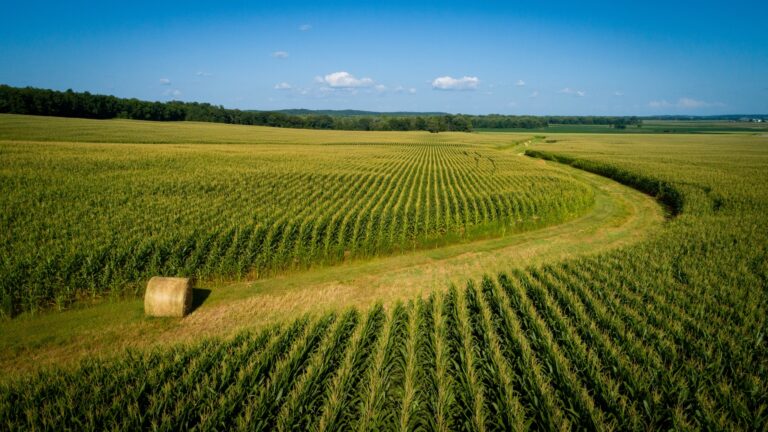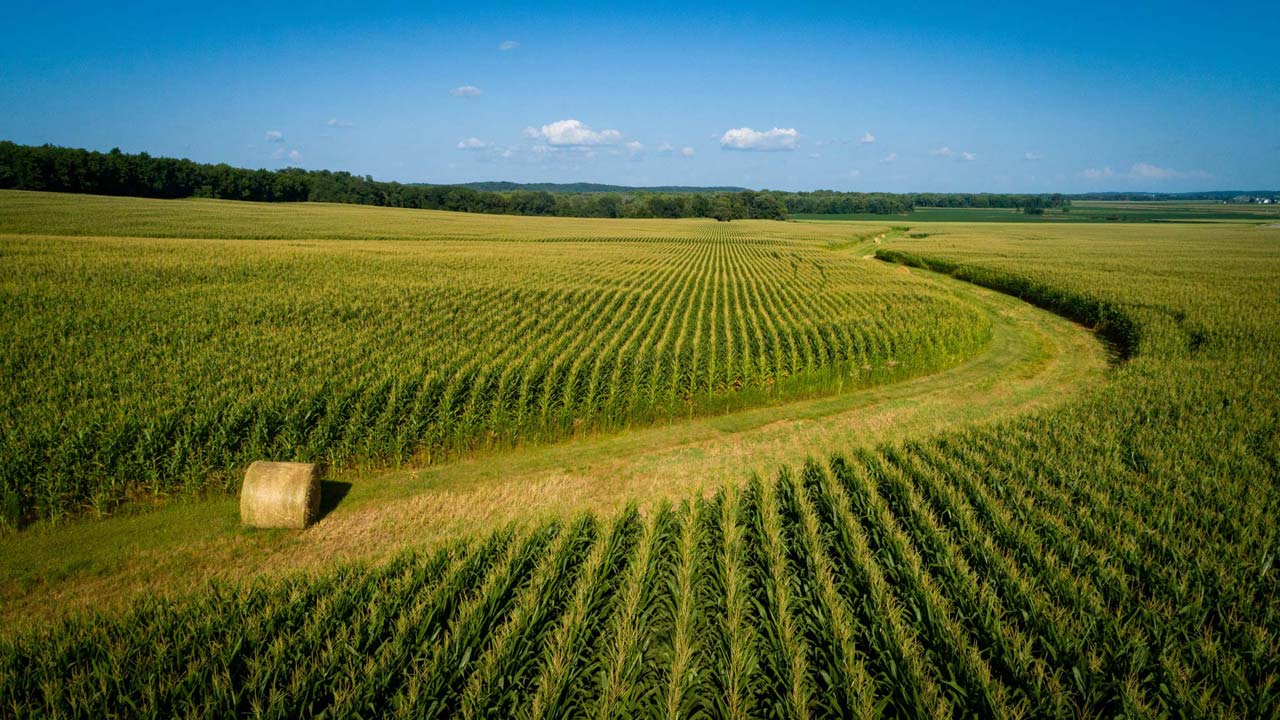2025 April Stewardship Advocate
Tar Spot
Tar spot is a fungal disease of corn characterized by small, black, tar-like lesions on the leaves. It can cause significant yield losses if not managed effectively. There are several methods to manage tar spot but timely diagnosis is probably the most critical.
What Causes Tar Spot
Tar spot is caused by an obligate fungus, Phyllachora maydis, and therefore, requires a living host to grow and reproduce. Tar spot disease likely originated in Mexico, South America, Central America and the Caribbean. It first appeared in the United States in 2015 in Indiana and Illinois but has since spread west (see Figure 1).

Figure 1. Presence of tar spot in the United States going into the 2025 growing season.Source: Crop Protection Network (tar spot of corn)
Tar Spot Can Impact Corn Yields
Yield losses are often a result of damaged green leaf area of the corn plant during grain fill resulting in reduced photosynthetic activity, poor grain fill, kernel abortion and reduced kernel weight. In addition, a severe infection of tar spot can reduce corn stalk integrity and cause lodging later in the season.
Scouting for Tar Spot
Corn tar spot can be diagnosed in the field by examining corn plants for the presence of the circular to diamond-shaped, black, tar-like spots, which usually have a slightly raised appearance and feel bumpy to the touch. These small, raised, black spots on leaves, husks and stalks called stromata. The stromata are embedded in the plant tissue and are a key sign of the tar spot disease (see Figure 2).

Figure 2. Corn leaf showing tar spot disease.
Managing Tar Spot
To manage tar spot in corn in Iowa, Iowa State University Extension recommends a multi-pronged approach. This includes scouting for disease symptoms, considering fungicide applications and planting tolerant hybrids. Fungicides are most effective when applied from the VT to R2 growth stages, but timing and severity of the disease should be considered before application, as fungicides applied after R3 may not provide sufficient control. According to Purdue, the steps in managing tar spot include:
- Crop Scouting and Diagnosis – Proper diagnosis and early detection of tar spot is critical for successful management of the disease. The Tar Spotter app (Tarspotter App) is a useful tool for tracking the presence of tar spot in your specific county and determining if conditions are conducive for tar spot development in your area.
- Fungicides – There are several fungicides that work to help control tar spot in corn. The fungicide efficacy chart available through the Crop Protection Network (Fungicide Efficacy to Control Corn Diseases ) can be used to select fungicides based on the level of tar spot in the field. Fungicide efficacy relies on optimal timing. Using fungicides with multiple modes of actions usually results in better control. In severe cases, a second application may be warranted.
- Hybrid Selection – There are few if any genetically resistant hybrids, but there are hybrids which provide partial resistance or tolerance. These hybrids can decrease tar spot severity. Check with your seed company for their selection of tolerant hybrids.
- Cultural Practices – The two common practices for reducing tar spot inoculum are crop rotation and tillage. Rotating to soybeans provides another season to break down corn residue which may be harboring inoculum. Tillage can help bury infested corn residue and reduce fungal spore movement. However, these practices can produce mixed results and are not the sole solution for preventing tar spot.
Latest Information
Grain Indemnity Fund Assessment to Cease on September 1, 2025
Secretary Naig Writes EPA, Congressional Leaders in Support of Nationwide E15 Access
How our farm will benefit from low-carbon corn
Researchers are Using Satellite Imagery to Help Predict Soybean Quality Before Harvest
Legacy Phosphorus Sources Dominate P Losses from Tile Drains – Conservation Drainage Network
Are Nutrient Management Plans Working? Here’s What the Latest Water Quality Data Shows
A trusted partner helping Iowa farmers uncover greater gains, success with sustainability

Farmer to Farmer: Vanessa Trampel
Vanessa and Kody Trampel are farmers in Cerro Gordo County in north central Iowa. They have been farming together on Kody’s family farm for the past 10 years. They primarily focus on corn crops by planting corn on corn for 3-4 years and then filling in with a year of soybeans. Vanessa and Kody are passionate about their operation and are sure to have their children involved.
“We are very active at the county fair and raise show animals with our three kids Pierce (5), Finley (4) and Waylon (7M). We love teaching them about our farm and working with our animals. The Trampel kids do not let any grass grow under their feet as they show cattle, pigs, sheep and goats,” said Vanessa. The future of farming is a huge priority to Kody and Vanessa and they love raising their kids on the farm and teaching them to advocate for what they are passionate about!
As for their corn crop, they plant 99-109 day hybrids at a plant population of 34,500. They variable-rate their phosphorus and potassium in the fall and apply anhydrous with a stabilizer in the fall. They come back in the spring with 32% Urea Ammonium Nitrate that is spiked with Ammonium Thiosulfate (ATS). They utilize minimal till with a vertical till. Their fertility plan is based on grid sampling that they do every four years.
Water quality and conservation are important to the Trampels. They have 60 foot buffer strips along the drainage ditch that runs through their farm to filter any runoff from the fields. Additionally, they use rotational grazing for their livestock. Vanessa says, “We also have a rotational grazing pasture that is 10 acres split into five paddocks. We rotationally grazed cow calf pairs in this pasture.”
In addition to a busy farm and family life, Vanessa is a District Field Manager for Iowa Corn. She works with farmers in District 2 in North Central Iowa. Prior to coming to Iowa Corn, Vanessa worked as a full-time nurse but the farm kept calling her back. “I wanted nothing more than to get back to my core roots of agriculture. My passion for agriculture through policy and the grassroots approach led me to apply at Iowa Corn, and one year later, there is no place I would rather be,” shared Vanessa. “I love advocating for farmers in every way, knowing that they do not always have the time to be off the farm advocating for themselves. In my position, I get work directly with the farmers and consumers. Telling our members story through my role leaves my cup full every single day.”
Events:
May 14: INRC Spring 2025 Water Research Seminar Series: Insights | Iowa Nutrient Research Center
Throughout May at Locations around Iowa: ISU Extension Calendar of Events – Events List
Throughout May: Events – Iowa Learning Farms Webinars

